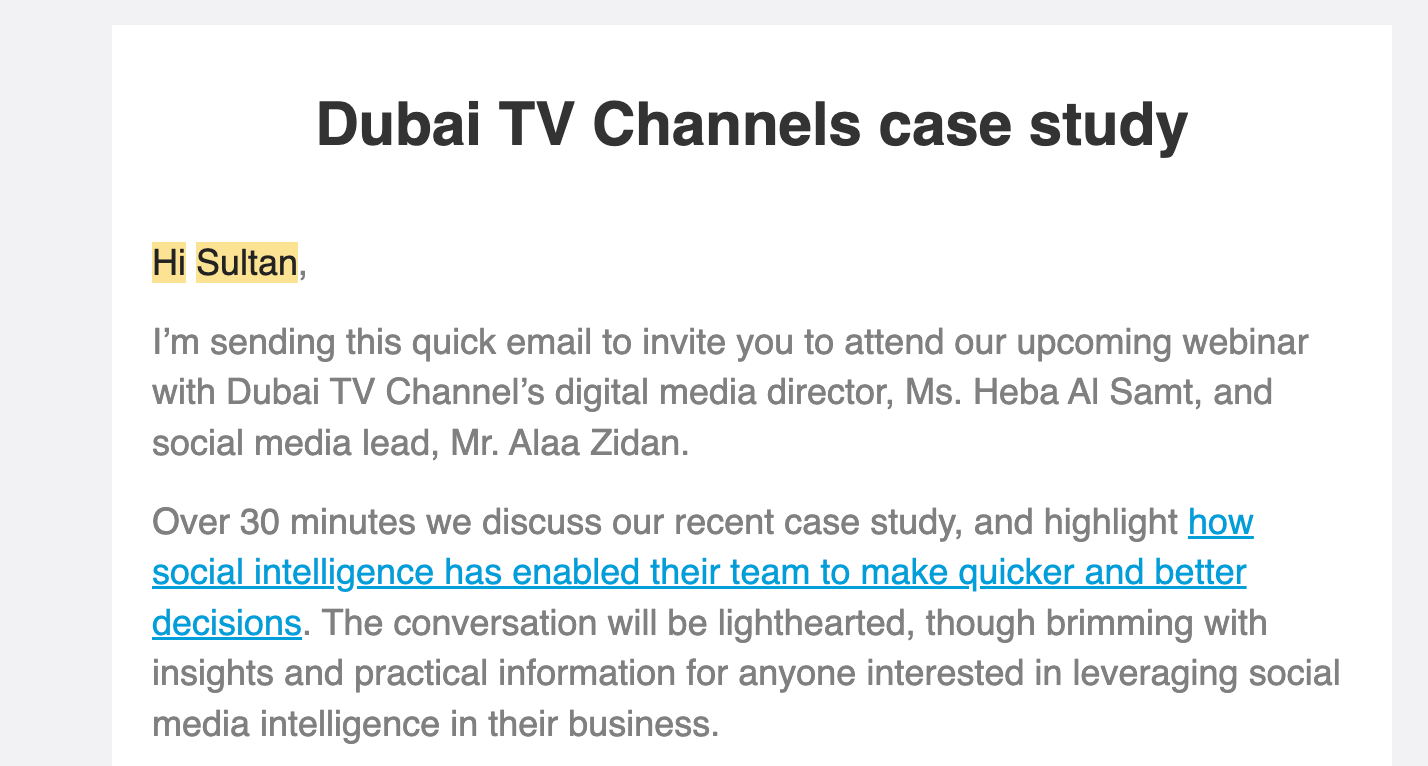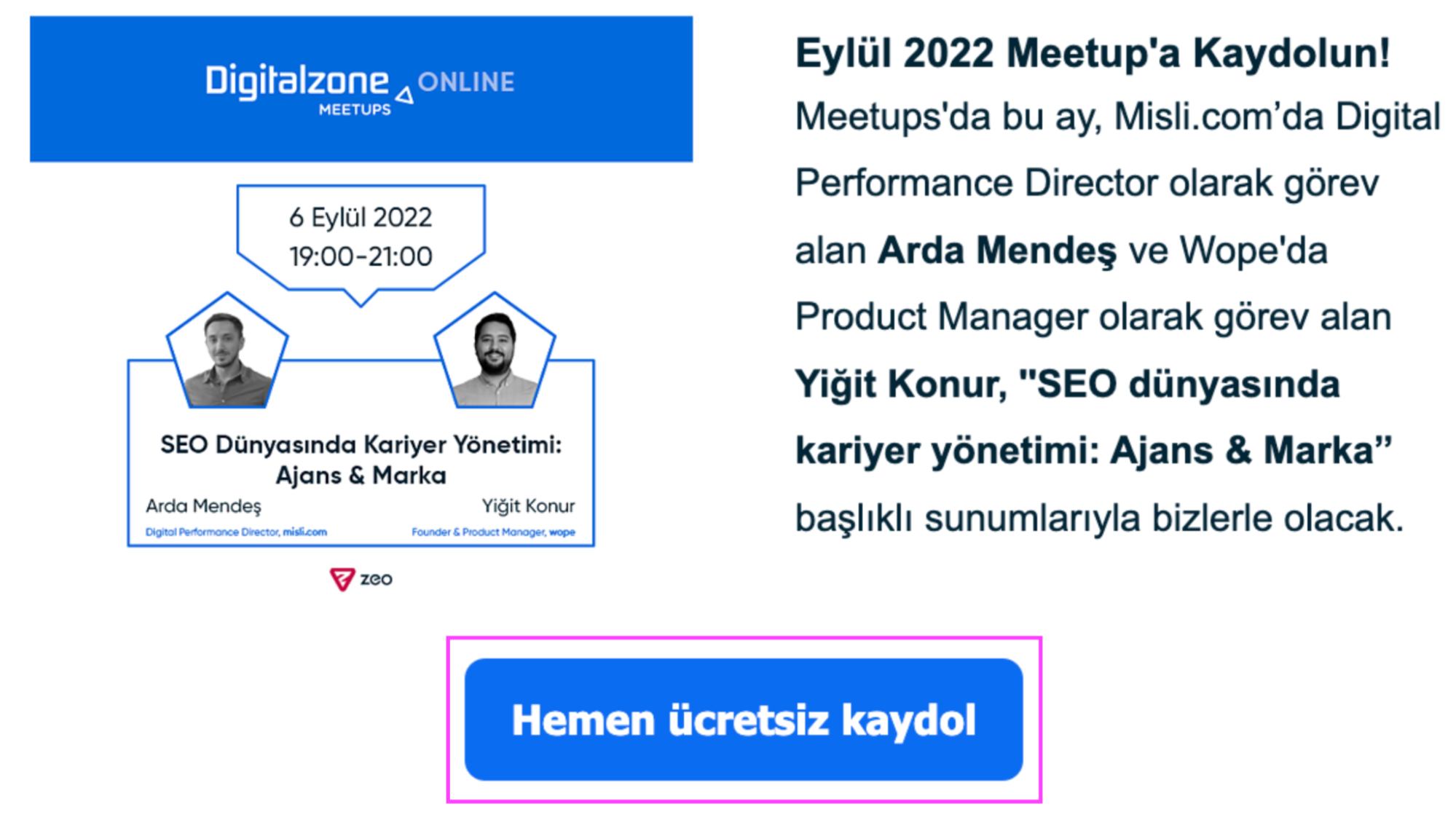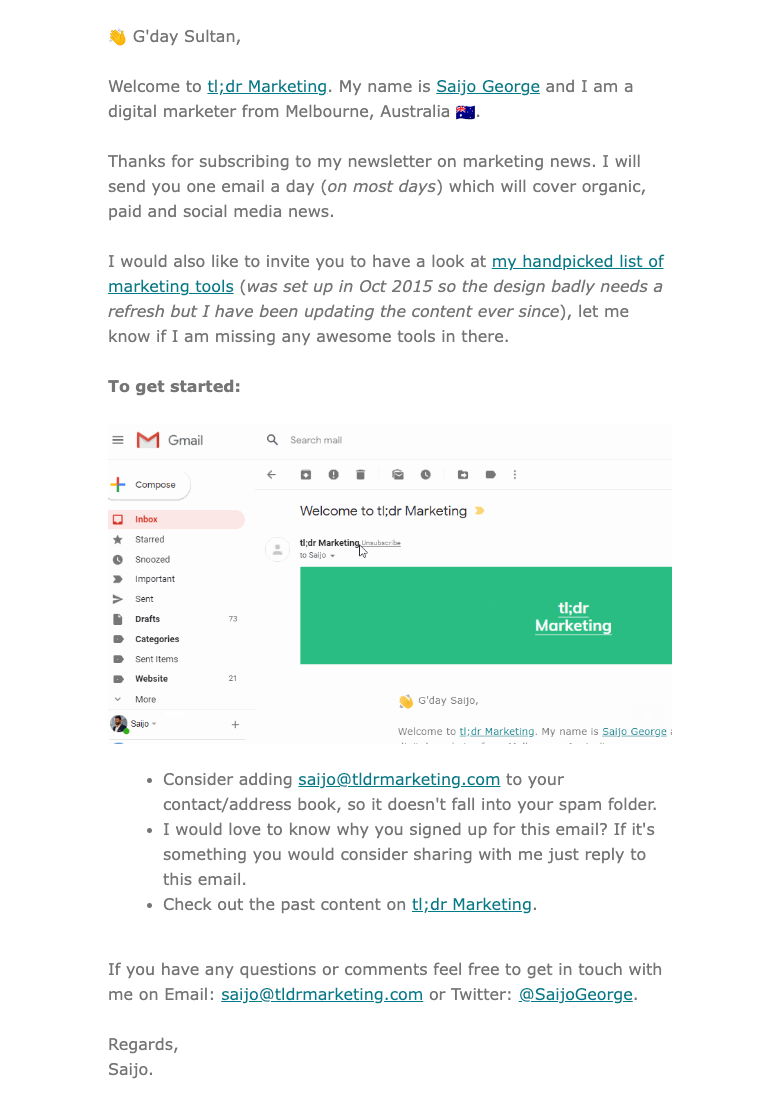7 Things to Consider in E-mail Marketing
Email marketing plays an important role in determining digital marketing strategies and is becoming inevitable for businesses. It plays an important role in building trust with customers and readers, getting important feedback about your business, announcing new services for your business and gaining new customers.
However, considering the number of emails that end up in people's inboxes, it takes a lot of effort to grab readers' attention and keep them engaged. In this blog post, we will share 7 things you should pay attention to in order to get the best results from the emails you send to your readers.
1. Personalization:
According to an infographic in Social Media Today, marketers who use personalization in their emails see 27% higher unique click-through rates and 11% higher open rates than those who don't. In addition, according to Campaign Monitor, 74% of marketers say that targeted personalization increases customer loyalty, and on average, they experience a 20% increase in sales when using personalized emails.
It is important that personalized emails are relevant to your readers in a way that grabs their attention, meets their expectations, and reaches them when they need something related to your products or services. To do this, it is important to make sure that you collect enough information from the users who visit your websites. You can send personalized emails using variables such as the user's name, location, email title and time. You can see an example of a personalized email with my name in my email box:
It cannot be said that those who use personalization will definitely be successful. However, less interaction will be received when it is not used. If more open, click and conversion rates are targeted, using personalization in e-mails will support achieving these goals. In addition to personalizations such as who the email is from and the name of the reader in the title of the email, you can increase the number of read and click of your emails by making the content of the email more relevant to the users.
2. Segmentation
In email marketing, segmentation is the process of taking the list of email subscribers and dividing them into smaller segments for a more targeted or personalized experience. Recipients' demographic information such as age and gender can be grouped by sector-based criteria such as purchase history for B2C businesses and sector reports for B2B businesses, as in Zeo.
Thanks to these segments, marketing departments can support the right information to reach the right people by providing more relevant content to people in segmented groups instead of sending a single message to everyone. As a result, the sales department can be positively affected as well.
3. A/B Testing:
The main purpose of A/B tests, which you can perform in different ways through different tools, is to find out which variation of the campaigns you create in e-mail marketing gives the best results by dividing the subscribers in your e-mail list with different variations.
A/B tests can vary in complexity. In A/B tests with less effort, you can test which one is opened more with variations such as email title, sender name and sending time, while in more complex tests, you can test which one gets more clicks by creating completely different email templates. You can also test and compare the results by dividing your subscriber audience into 50% and 50% when A/B testing, or you can send to the remaining 40% of the audience with the winning variation after a certain hour with a distinction such as 30% and 30%.
With A/B testing campaigns, you can find out which time of the week/day has a higher open rate, how engagement is affected when the company name or employee name is included in the email header, or whether recipients prefer campaigns with static images or GIFs.
When we experienced Mailchimp and Hubspot, which are among the most used tools for mailing, we realized that there are some limitations in Hubspot, especially when doing A/B testing, while we can do more complex and rich tests with Mailchimp. For example, when we wanted to test the hours we send e-mails, unfortunately, we could not send an e-mail by selecting the hours we wanted on Hubspot. Instead, we were able to send an e-mail to the winning variation after a certain time interval to select a desired time and send the other one.
4. CTA (Call to Action) Button:
Call to Action buttons have gained an important place in e-mail campaigns. These buttons usually redirect to a destination other than the e-mail. For example, to encourage registration for a free webinar, you can use the button "Sign up now for free". The CTA redirects to the webinar page. You can find an example below:
To increase downloads of a free report, the reader is directed to the landing page of the report with a call to action similar to the one above, such as "Download now for free". They also increase click-through rates as they clearly show the reader what they should do next. In the email marketing tools used, you can usually observe that when you look at where users click in emails, CTA buttons are one of the places where the most clicks come from. Finally, in order to increase the impact of CTAs, items such as their location in the email, design, color, text and how many should be considered.
5. Relevant/Irrelevant User Distinction:
It is important to review the user base that subscribes to your mailing list at certain intervals (every 6-12 months) for improving open rates. Reducing open rates can be prevented by positioning readers who do not open your latest mails in a separate segment. Reader behavior can be observed by conducting various experiments on inactive readers. For example, this audience may not read your emails because they do not like to receive emails too often. In this case, you can send fewer emails and examine the open rates for a short period of time. If there is still no positive change, you can move this audience to the inactive reader segment and stop sending emails or delete them directly from your subscriber list.
6. Welcome E-maili:
According to a study, the average open rate for welcome emails is 50%. By making a good impression for readers who have just subscribed to your e-mail list, you can increase the open rates of your next e-mails. Here, you can talk about the benefits of this e-mail subscription to the readers by introducing your brand's product/services and general information. With this, you can establish better and more interactive communication with your customers, reduce spam and unsubscribe rates, and increase customer loyalty. You can check tl;dr Marketing's example of a welcome email below:
Understanding the difference between single opt-in and double opt-in is also an important concept in email marketing. With single opt-in, users only need to fill in the required information such as name, surname, e-mail, company and position in the relevant boxes to subscribe to a company's e-mail. With double opt-in, after entering the information as with single opt-in, an e-mail sent users to verify their e-mail address. By doing so, readers actively signed up for the newsletter, which reduces spam rates.
7. Rewarding Subscribers:
Since the readers who open, click and interact the most are the loyal readers of your brand’s newsletter, you can make them feel special by doing special work for these readers. In B2C businesses, you can define special discount and coupon codes for your customers, while in B2B businesses, you can deliver special content such as reports to your readers first.
BONUS:
You may not have started email marketing for your brand yet. For this reason, the first thing that comes to mind for some businesses is to immediately buy a list of contacts. But this is not a good idea. First of all, the purchased audience will probably not be your target audience, so you will be trying to send emails to an audience that will not actually be interested in your product or service. This will naturally have a negative impact on your email marketing KPIs and the important metrics you track, such as open and click-through rates. Instead, you can feed your subscriber list with omni-channel marketing strategies. For example, you can ask your followers who are your target audience on your actively used social media channels to subscribe to your newsletter. When you reach your target audience organically, you can reach your e-mail marketing goals by creating a high quality audience.
You can access our other articles on email marketing from the links below:
- https://zeo.org/resources/blog/email-analysis-6-email-metrics-to-track
- https://zeo.org/resources/blog/migration-of-email-automation-software-things-to-pay-attention
This article was written by our former marketing specialist Sultan Yüksel.




